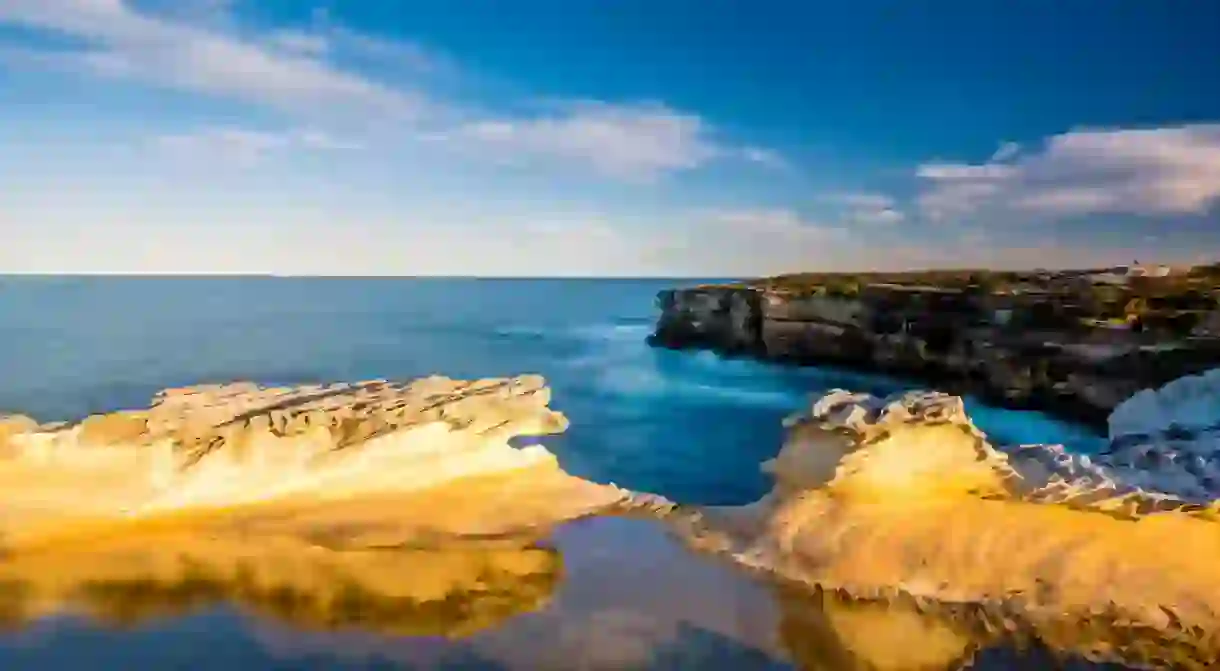Historic Sites to See in Australia

In comparison to other nations, Australia seems quite young, having only been colonised by European settlers in the late 18th century. However, Indigenous Australians have occupied the land for at least 65,000 years. From ancient rock art in Kakadu to Cook’s Landing Place, these are some of most significant historical locations in Australia.
Australia only became a nation in 1901, but the history of this ancient land stretches back much further than that. From millennia-old pieces of Indigenous art to more recent chapters of Australia’s colourful convict past, wind back the clock at these fascinating historic sites across the country.
Kakadu National Park
Australia’s largest national park has been home to Indigenous people for more than 50,000 years, and there’s a series of ancient Aboriginal rock art sites to prove it. Indigenous communities have expressed their culture at places like Ubirr, Nourlangie and Nanguluwur for millennia — the stunning Ubirr escarpment is the most spectacular, offering postcard views of the Alligator River floodplain below.
Mungo National Park

The windswept dunes and barren lakes of this remote corner of New South Wales provide another important portrait of Indigenous culture. Lake Mungo is the oldest ritual burial site on the planet, containing the remains of the so-called Mungo Man and Mungo Lady. Carbon-dating the cremated couple proves that Australia has been inhabited for between 40,000 and 68,000 years, and that Aboriginal people have maintained the oldest continually surviving culture on Earth.
Wiebbe Hayes Stone Fort

Wiebbe Hayes Stone Fort lays claim to a tale of treachery on the high seas that The Pirates of the Caribbean franchise would be proud of. Following the infamous Batavia shipwreck and mutiny off Australia’s west coast in 1629, a group of Dutch sailors built a stone fort on the picturesque Houtman Abrolhos Islands to protect themselves from the bloodthirsty mutineers, constructing Australia’s oldest known European building in the process.
Captain Cook’s Landing Place

Fun fact: Captain Cook wasn’t actually a captain when he first set foot on Australian soil. In 1770, Lieutenant James Cook arrived on Australia’s east coast to colonise the continent on behalf of the British, planting the Union Jack in Botany Bay in southern Sydney on 29 April. These days, the landing site is commemorated with a plaque and obelisk in the serene seaside Botany Bay National Park.
Elizabeth Farm

The British quickly turned Sydney into a convict colony, but the area west of the fledgling city is where free settlers started to build a life. Constructed by pioneering military couple John and Elizabeth Macarthur, Parramatta’s Elizabeth Farm is a snapshot of agricultural life in late 18th-century Australia. Today, the historic estate is a heritage building, museum and homage to one of colonial Sydney’s most colourful characters, who was eventually sent back to the motherland for duelling.
Port Arthur Historic Site

Convict prisons sprang up all around Australia in those early colonial days, but few boast a backdrop as beautiful as Port Arthur’s. This heritage-listed penal colony housed reoffenders, recidivists and recalcitrants in notoriously brutal conditions, although at least the view was nice – Port Arthur is located in a lush green corner of Tasmania, where 30 historic buildings remain standing to this day.
Fremantle Prison

The charming port city of Fremantle also features its own impressive colonial prison, which was built with the blood, sweat and tears of convicts during the 1850s. The gaol interned Western Australia’s meanest inmates until it was decommissioned in 1991, before the male wing was transformed into a museum and the women’s wing was converted into a one-of-a-kind youth hostel where you can even spend the night in an original cell.
Eureka Stockade

As hordes converged on the goldfields of rural Victoria to fossick for their fortune in the 1850s, the locals grew restless with the British colonial authorities. In 1854, Ballarat was the scene of the Eureka Rebellion, when 22 miners died in a brief but violent uprising against the Crown. Eureka was a seminal moment in Australian democracy, and it’s remembered with a state-of-the-art museum containing the original Eureka flag.
Glenrowan

The other product of the Gold Rush? Bushrangers, who trampled the countryside trying to rob their riches. Australia’s most iconic outlaw was an Irishman named Ned Kelly, who enjoys Robin Hood-like status as a fabled folk hero who stood up to British oppression. Kelly’s final showdown with the authorities came in the town of Glenrowan before he was hanged at Old Melbourne Gaol in 1880, both must-see sites for history buffs.
Royal Exhibition Building

When World Expos were the hottest show on the planet during the 19th century, Melbourne was lucky enough to host one – and the Victorian capital built a magnificent exhibition hall to match. Surrounded by the immaculately curated Carlton Gardens, the Royal Exhibition Building is one of the very few World Expo pavilions that survives in the 21st century, which is why it became the first building in Australia to be given UNESCO World Heritage status in 2004.
Old Parliament House

When Australia opened a brand-new Parliament House in 1988, the old one was converted into a museum of democracy, allowing visitors to roam the halls of the building that led Australia through most of the 20th century. And even if you’re not into politics, it’s still fun to take a seat in the old prime minister’s office, which has been preserved like a time capsule from the 1980s.
Monique La Terra contributed additional reporting to this article.













